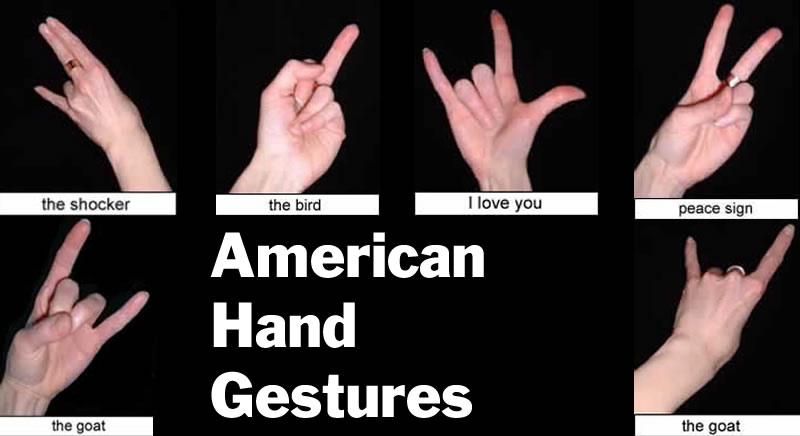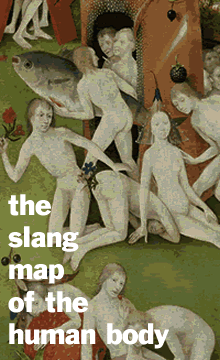The Shocker
Hi A.C.,
We (in the office) were discussing the meaning of the manual gesture known as “the shocker,” especially as displayed by young women to other young women. Although rather crude, none of us find it to be particularly “shocking ”(it's hard to be shocked when you grew up in the '60s or '70s). Please elaborate for us Boomers and Kennedy-era kids--what gives with the hand thing?
(Hey--it's a slow day, you know?)
C.J.
P.S. - How come the networks will show it on TV if they won't show “the bird”? One of my colleagues said “the shocker ”was shown repeatedly during Olympic coverage.
 photo credit: "American Hand Gestures": by A.C. Kemp, All rights reserved
photo credit: "American Hand Gestures": by A.C. Kemp, All rights reservedDear Carol,
Yes, this is definitely a strange trend in gestures. While flipping the bird, also known as giving someone the finger, is one of the most popular and longstanding signals, there have been others that have gotten a tremendous amount of use over the past few decades. All of these differ in a way from the shocker.
Of course, in the 70s, the peace sign was probably the second most popular gesture, but that was also a signal of friendship and love. Flipping the bird, as I'm sure you know, means “fuck you” (I hate you).
In the 80s, the American Sign Language gesture for “I love you” became very popular, perhaps because of the 1986 movie Children of a Lesser God, which told the story of a difficult romance between a hearing man (William Hurt) and a deaf woman (Marlee Matlin).
A very similar sign often seen at hard rock concerts is the goat, or devil’s horns (shown below from both the front and back). The difference between this sign and “I love you” is that for the goat, the thumb comes in and covers the two middle fingers. For many, this is the symbol of Satan.
Ironically, it is also the hook'em horns sign used to show support for the University of Texas Longhorns football team, leading to some confusion when it is made by Texans such as devout Christian President Bush.
But while these signs create strong and easy-to-understand messages, such as “I love you,” “I hate you,” “I love Satan” and “I love the Texas Longhorns,” the shocker is not so clear cut. The gesture is meant to represent a sexual act in which a woman is manually stimulated. The index and middle fingers are inserted into the vagina and the pinky finger is put into the anus for a “shock.” There are dozens of slang phrases to describe this act, the most common being “two in the pink, one in the stink.”
As you noted, this sign has become very popular with teens and college students. And I think the name says it all. It can obviously be used with the intention of shocking or offending those who know what it means. But of course, it's even more fun doing it for those who do not know what it means, like parents, teachers and network executives. The entertainent value of making an obscene gesture in front of clueless adults cannot be underestimated.
I didn’t notice it in the crowds at the Olympics, but it seems a likely candidate at snowboarding events. My guess is that if it has appeared on the air, like some obscene words that make it onto the radio, it is shown because the powers at NBC just don't know what it represents. Or perhaps they do and just assume that none of their more easily offended viewers know what it is.
Your pal,
![]()
A. C. Kemp
February 23, 2005



